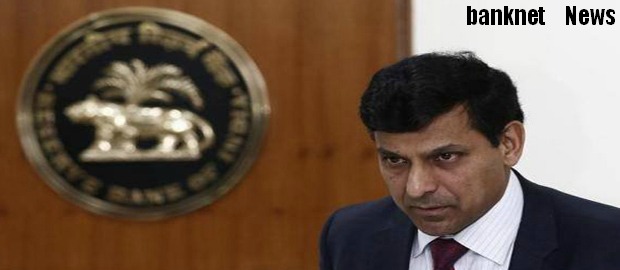

First Bi-monthly Monetary Policy Statement for 2015-16 By Dr. Raghuram G. Rajan, Governor, RBI - April 07, 2015 - Full Text
Policy Stance and Rationale
n 2015 so far, the inflation path has evolved along the projected path after a sizable undershoot of the January 2015 target. CPI inflation is projected at its current levels in the first quarter of 2015-16, moderating thereafter to around 4 per cent by August but firming up to reach 5.8 per cent by the end of the year . There are upside risks to the central projection emanating from possible intensification of el niño conditions leading to a less than normal monsoon; large deviations in vegetable and fruit prices from their regular seasonal patterns, given unseasonal rains; larger than anticipated administered price revisions; faster closing of the output gap; geo-political developments leading to hardening of global commodity prices; and spillover from external developments through exchange rate and asset price channels. However, at this juncture, these upside risks appear to be offset by downsides originating from global deflationary/disinflationary tendencies, the still soft outlook on global commodity prices; and slack in the domestic economy.
Transmission of policy rates to lending rates has not taken place so far despite weak credit off take and the front loading of two rate cuts. With little transmission, and the possibility that incoming data will provide more clarity on the balance of risks on inflation, the Reserve Bank will maintain status quo in its monetary policy stance in this review.
The Monetary Policy Framework Agreement signed by the Government of India and the Reserve Bank in February 2015 will shape the stance of monetary policy in 2015-16 and succeeding years. The Reserve Bank will stay focussed on ensuring that the economy disinflates gradually and durably, with CPI inflation targeted at 6 per cent by January 2016 and at 4 per cent by the end of 2017-18. Although the target for end-2017-18 and thereafter is defined in terms of a tolerance band of +/- 2 per cent around the mid-point, it will be the Reserve Bank’s endeavour to keep inflation at or close to this mid-point, with the extended period provided for achieving the mid-point mitigating potentially adverse effects on the economy. As outlined above, several favourable forces are at work, consistent with the change in the monetary policy stance towards accommodation effected from January. The Reserve Bank’s intent is to allow the disinflationary momentum to spread through the economy, but remain vigilant about any resurgence of inflationary pressures that may destabilise the progress towards the inflation objectives set in the Agreement.
The outlook for growth is improving gradually. Comfortable liquidity conditions should enable banks to transmit the recent reductions in the policy rate into their lending rates, thereby improving financing conditions for the productive sectors of the economy. Along with initiatives announced in the Union Budget to boost investment in infrastructure and to improve the business environment, these factors should provide confidence to private investment and, together with the conducive outlook on inflation, deliver real income gains to consumers and lower input cost advantages to corporates. GDP growth estimates of the CSO for 2014-15 already project a robust pick-up, but leading and coincident indicators suggest a downward revision of these estimates when fuller information on real activity for the last quarter becomes available. Uncertainty surrounding the arrival and distribution of the monsoon and unanticipated global developments are the two major risks to baseline growth projections. Assuming a normal monsoon, continuation of the cyclical upturn in a supportive policy environment, and no major structural change or supply shocks, output growth for 2015-16 is projected at 7.8 per cent, higher by 30 bps from 7.5 per cent in 2014-15, but with a downward bias to reflect the still subdued indicators of economic activity .
Going forward, the accommodative stance of monetary policy will be maintained, but monetary policy actions will be conditioned by incoming data. First, the Reserve Bank will await the transmission by banks of its front-loaded rate reductions in January and February into their lending rates. Second, developments in sectoral prices, especially those of food, will be monitored, as will the effects of recent weather disturbances and the likely strength of the monsoon, as the Reserve Bank stays vigilant to any threats to the disinflation that is underway. The Reserve Bank will look through both seasonal as well as base effects. Third, the Reserve Bank will look to a continuation and even acceleration of policy efforts to unclog the supply response so as to make available key inputs such as power and land. Further progress on repurposing of public spending from poorly targeted subsidies towards public investment and on reducing the pipeline of stalled investment will also be helpful in containing supply constraints and creating room for monetary accommodation. Finally, the Reserve Bank will watch for signs of normalisation of the US monetary policy, though it anticipates India is better buffered against likely volatility than in the past.
Assessment ... Read more
Policy Stance and Rationale ... Read more
Banking Structure... Read more
Financial Markets ... Read more
Access to Finance... Read more
RBI Monetary and Credit Policies (1999-2015) - Notifications, Press Releases, Reports - Click here

BANKING

FINANCE

INSURANCE

TECHNOLOGY

Foreign Exchange


